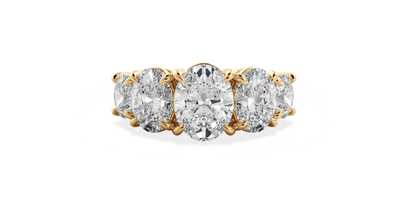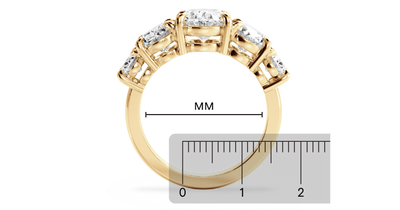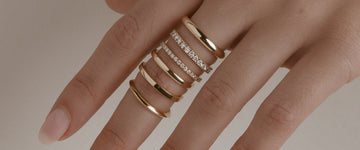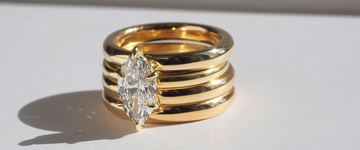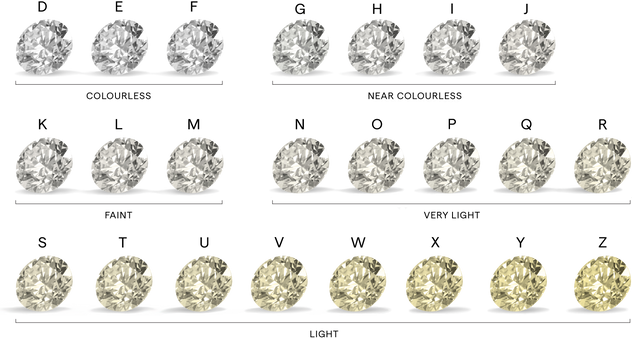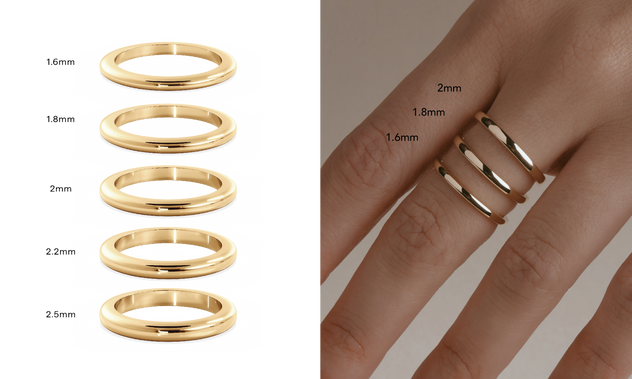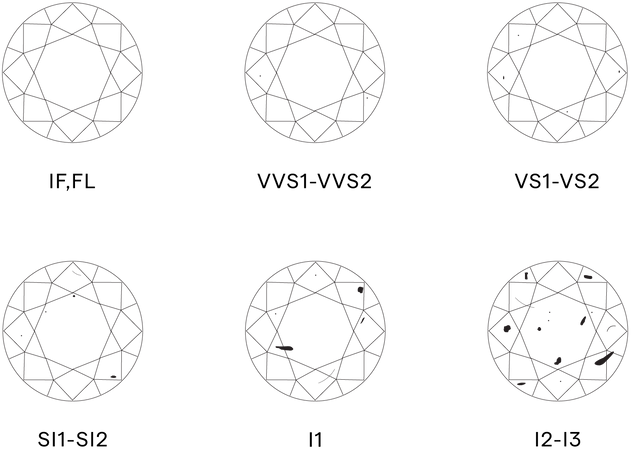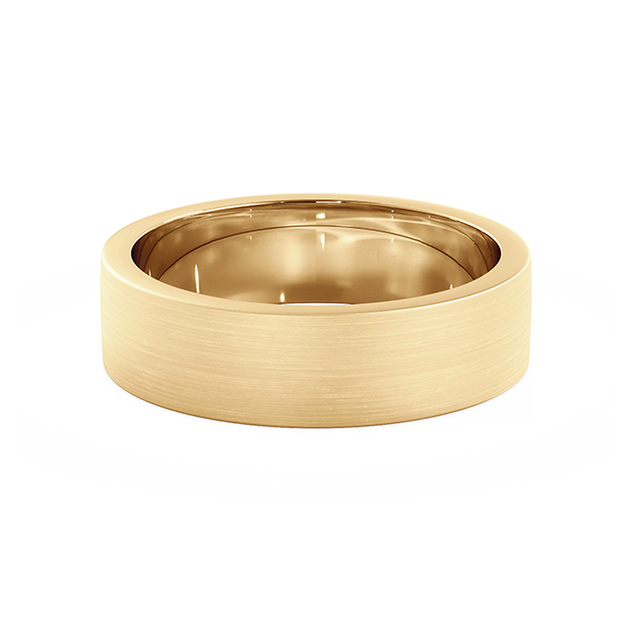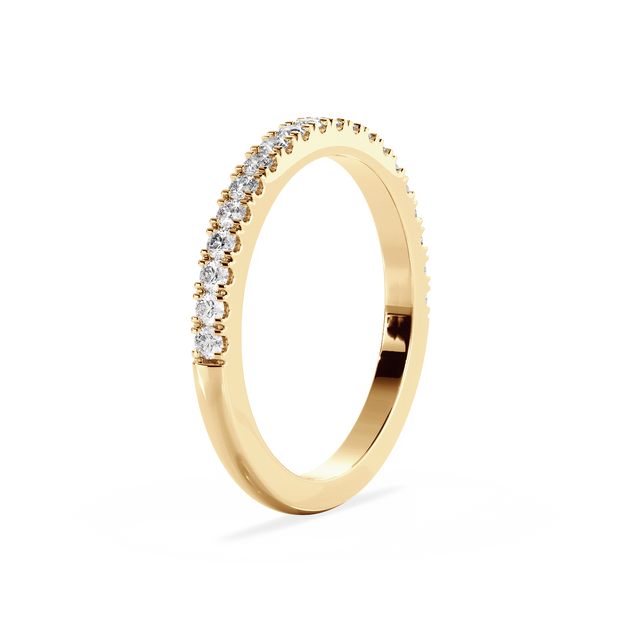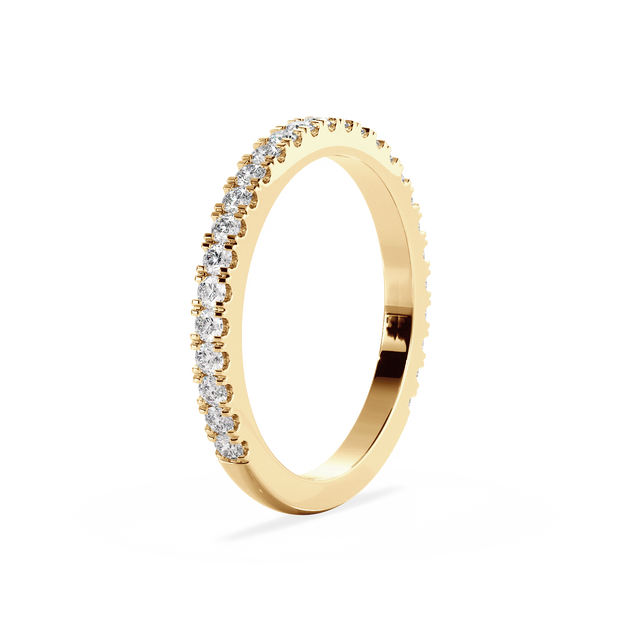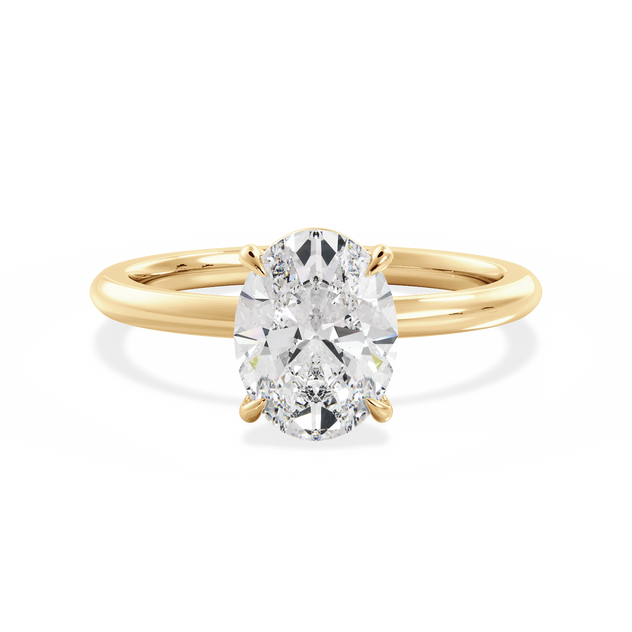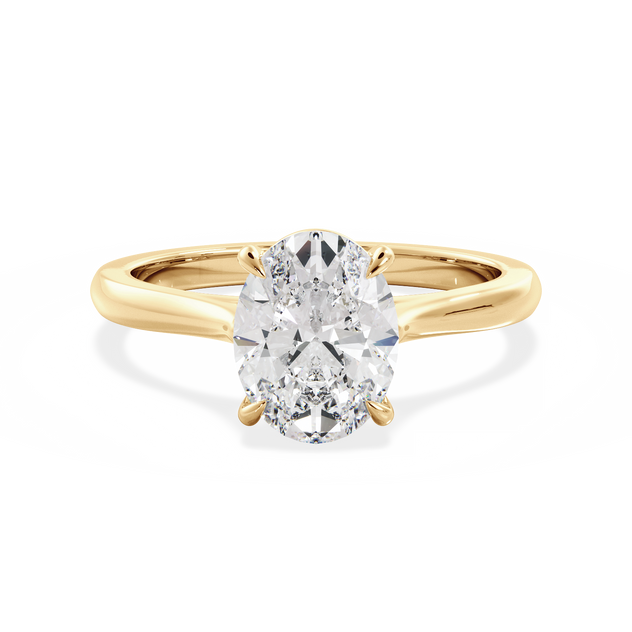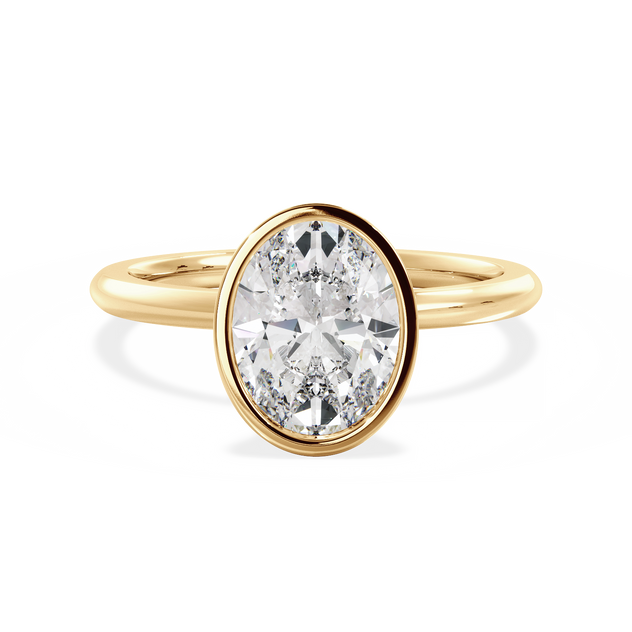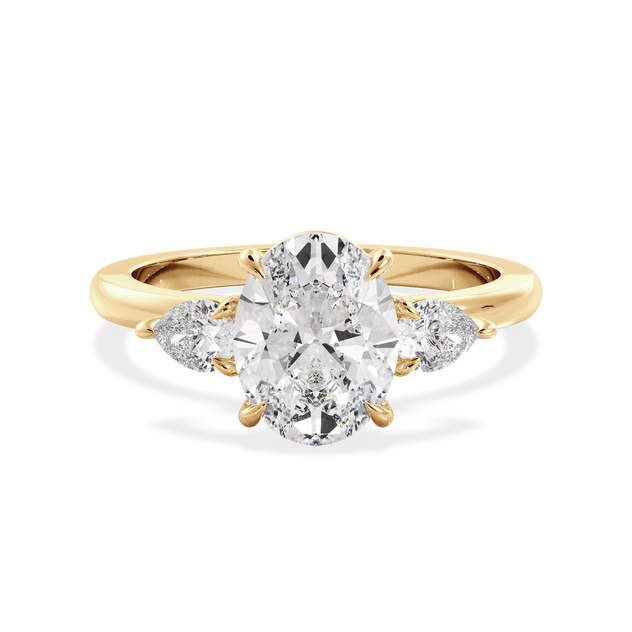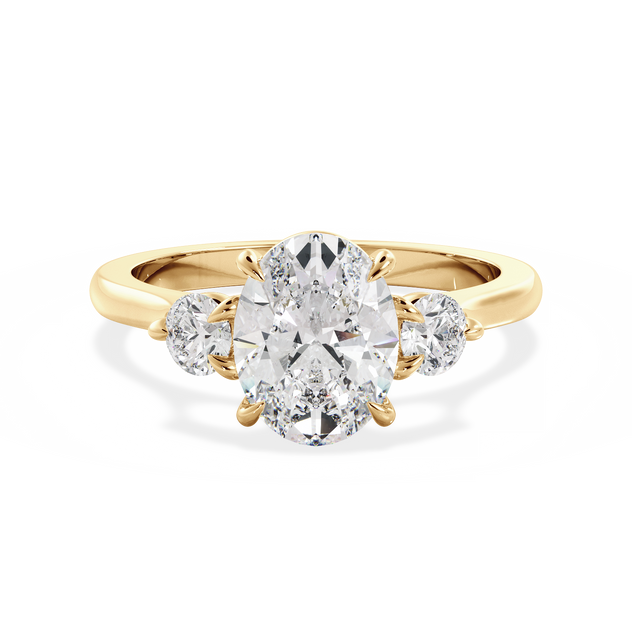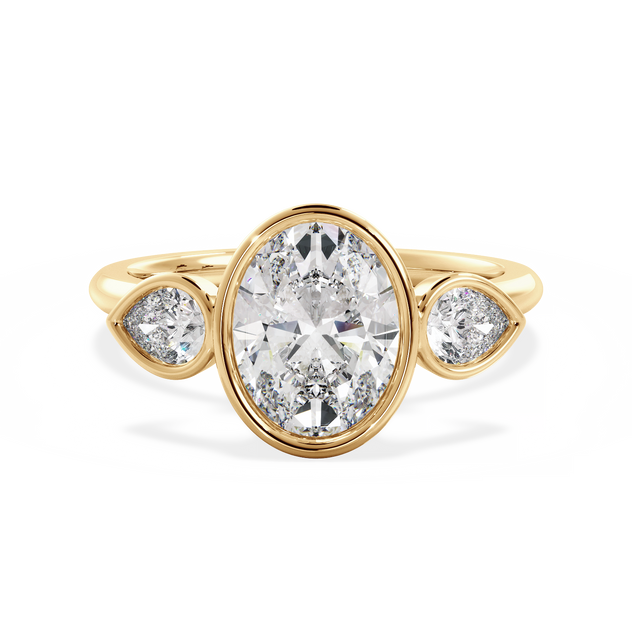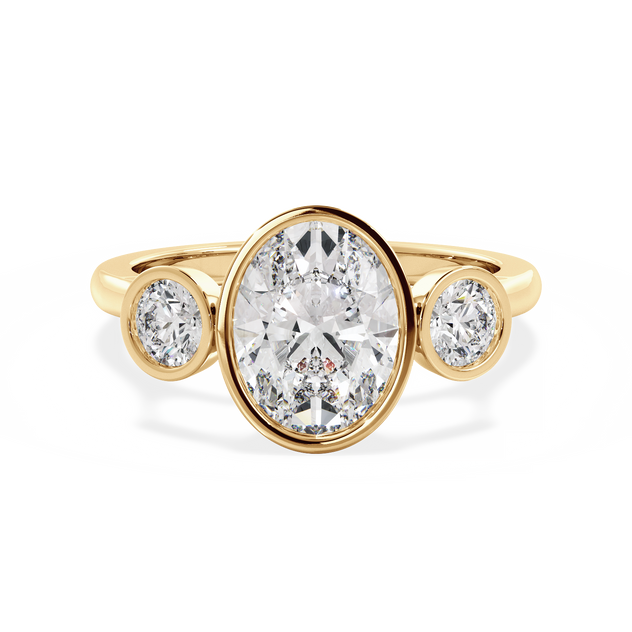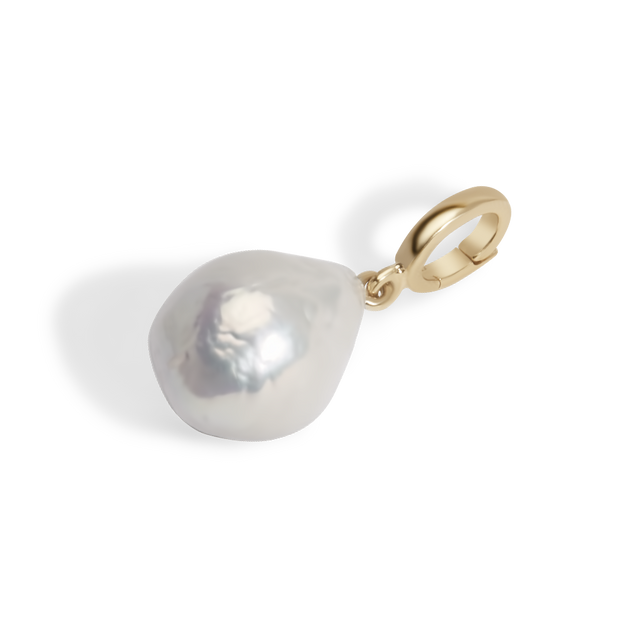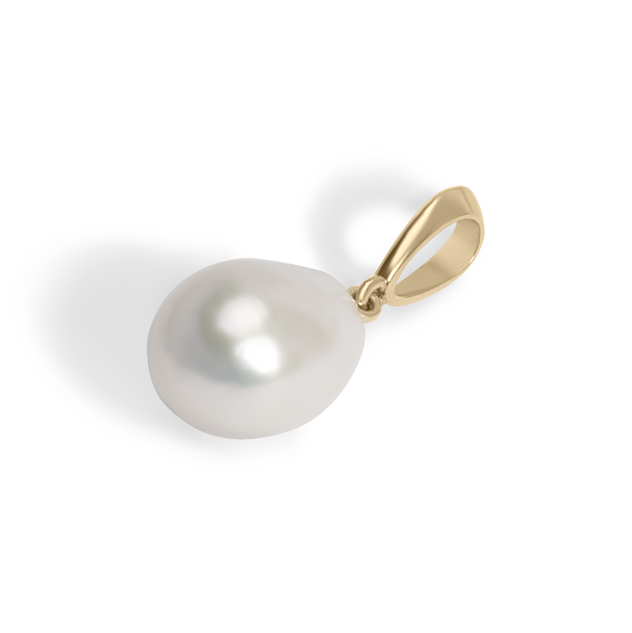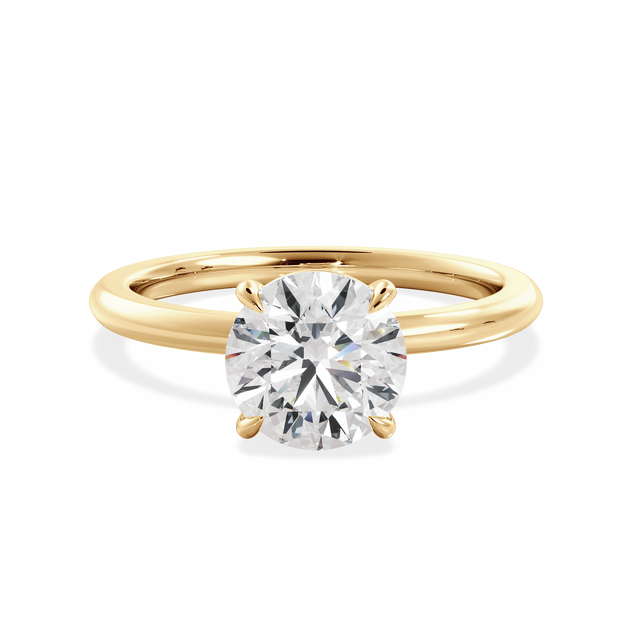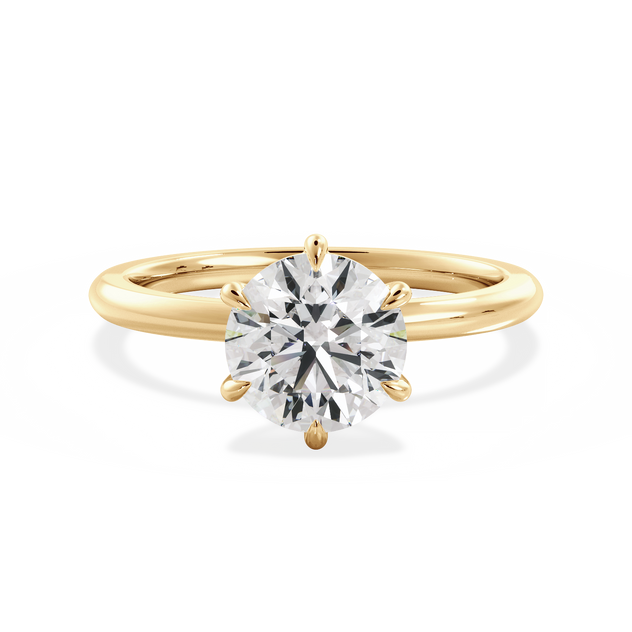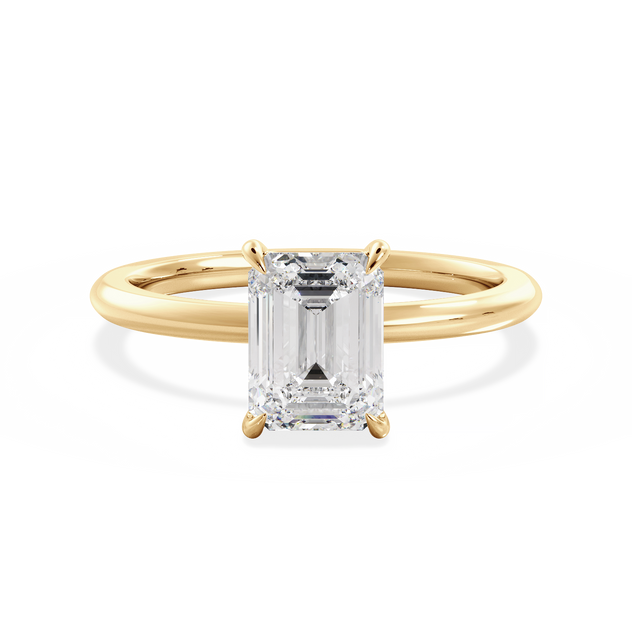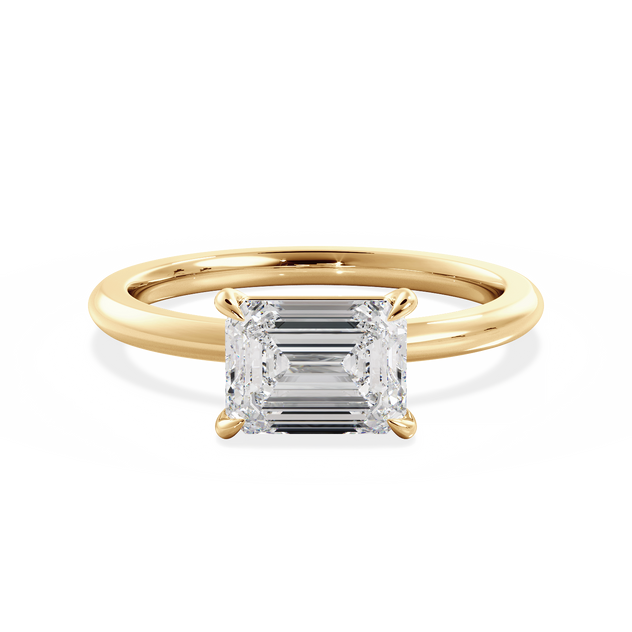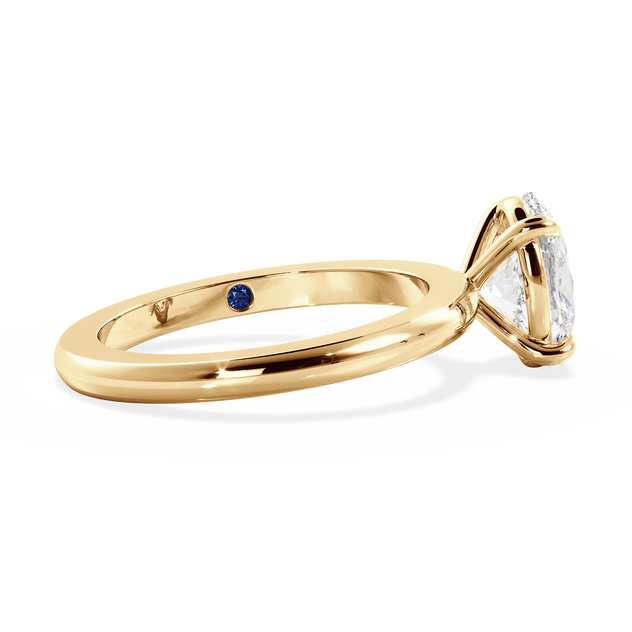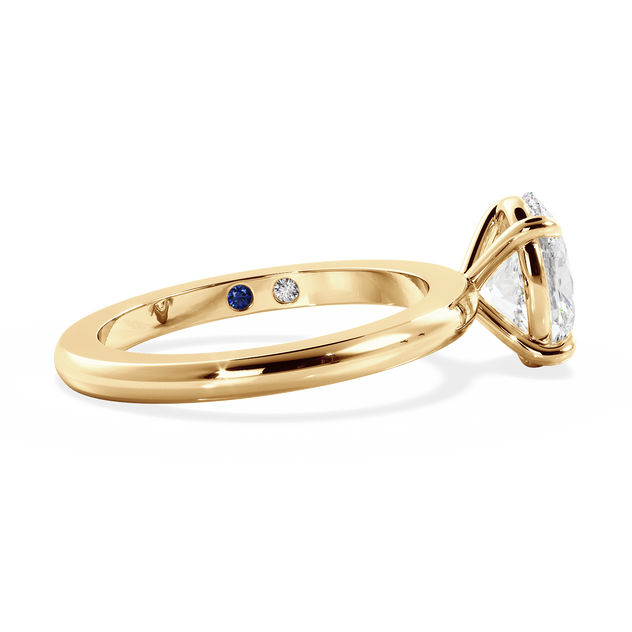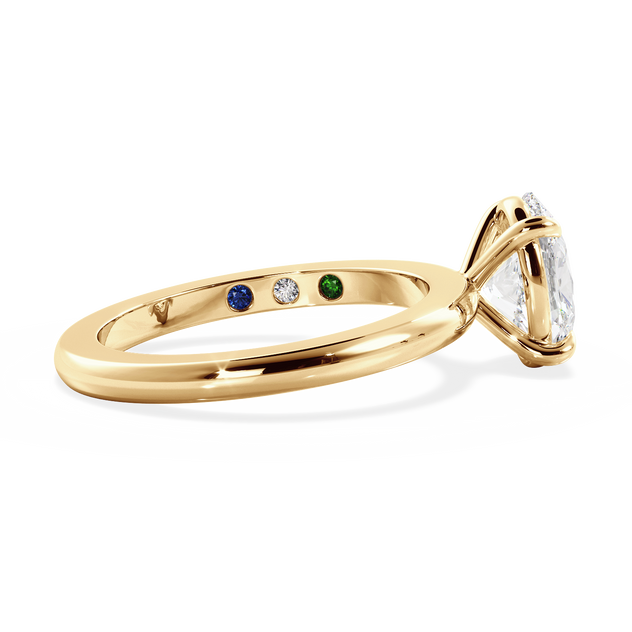Use an existing ring that fits on the ring finger
Jewellery is both a personal and considered investment and with proper care, will last for generations to come.
LOUISE JEAN takes great pride in the precious metals that we work with, and our high-grade gold is supplied by one of Australia's leading specialists in precious metals which are certified by the Responsible Jewellery Council (RJC). All of their metals are alloyed in-house primarily from post-consumer and recycled metals, guaranteeing the quality of product, traceability of supply-chain and responsible practice.

In its purest form, gold (24K) is incredibly soft; this is not ideal for jewellery for everyday wear. For this reason, other precious and base metals, such as palladium, copper and zinc, are alloyed to create a stronger and durable metal.
Karats are units of measurement that indicate the percentage of pure gold in your jewellery. Be sure you don’t get confused with the term carat (pronounced the same) which is a unit of measurement for the weight of a diamond or gemstone.
DURABILTY VS HARDNESS
When comparing 9K, 14K, and 18K gold, it's important to distinguish between hardness and durability, as they are often misunderstood. While 9K gold is indeed harder than 14K and 18K gold due to its lower gold content and higher percentage of other metals, this does not necessarily make it more durable. Hardness refers to a metal's resistance to scratches and dents, but it also makes the metal more brittle and prone to cracking under pressure or impact. Durability, on the other hand, is about how well the metal can withstand everyday wear and tear over time without breaking or deforming. In this regard, 14K and 18K gold, with their higher gold content, are more durable as they are less brittle and better suited to withstand stress and impact. Therefore, while 9K gold may resist scratches more effectively, 14K and 18K gold are generally better choices for long-lasting jewellery.
With everyday wear, it is natural that all gold will scratch and scuff. The karat of gold can have a minor role in its overall durability; however, gold will never be scratch or damage resistant.
The Mohs scale of hardness for 9K yellow gold typically ranges between 3.5 and 4. For 14K yellow gold, the Mohs scale of hardness is generally around 3 to 3.5. For 18K yellow gold, the hardness is slightly lower, typically ranging from 2.5 to 3. While this indicates that 9K gold is harder than both 14K and 18K, it is still relatively soft compared to many other substances that your ring is likely to come into contact with.
Due to the clear durability benefits of 18K gold in engagement rings, LOUISE JEAN exclusively handcraft our Signature and Bespoke designs in 18K gold or platinum. We offer a wider range of metal types in our Wedding Collection to ensure those who do not own a LOUISE JEAN engagement ring can choose a LOUISE JEAN wedding ring in a consistent metal type.
CARE
Pure gold (24K) does not tarnish, but the base metals alloyed with it can react when exposed to certain chemicals like perfumes, chlorine, hairspray, and harsh cleaning products. The higher the karat, the less likely the gold is to discolour.
Generally, your gold jewellery should not tarnish, as tarnishing is often more related to the chemistry of your skin than the metal itself. For tips on maintaining your gold, refer to our jewellery cleaning and care guide.
Scratches and scuffs from daily wear are normal and can be polished out by a jeweller. At LOUISE JEAN, we offer a complimentary annual cleaning and service for all our rings.
Yellow Gold:

Appearance
When comparing the visual appearance of 9K, 14K, and 18K yellow gold, the difference lies primarily in their colour intensity and warmth.18K yellow gold, with its higher gold content, has a rich yellow hue that is often described as more vibrant and luxurious.
14K yellow gold, while still offering a pleasing golden tone, appears slightly lighter and less intense than 18K, as it contains a higher percentage of alloyed metals.
9K yellow gold, with the lowest gold content, has the palest appearance of the three, often looking less rich and with a more muted yellow colour. The increased presence of base metals in 9K gold gives it a subtler and less warm tone compared to 14K and 18K gold.
Rose Gold:

Appearance
Rose gold has become increasingly popular over the years due to the feminine and romantic appeal. The pinkish-red tone is due to additional copper when alloyed with pure gold, giving the metal, its unique blush appearance.
When comparing the visual appearance of 9K, 14K, and 18K rose gold, the differences are quite subtle.
18K rose gold, with its higher gold content, has a warmer pink hue that is soft yet distinctly rosy, offering a luxurious and romantic appeal.
14K rose gold strikes a balance, displaying a slightly more subdued pink colour compared to 18K but still retaining a lovely warmth.
In contrast, 9K rose gold, with the highest proportion of base metals, has a paler, more subtle hue. The colour is less vibrant and can sometimes lean more towards a coppery or muted pink shade, lacking the deep, rich warmth seen in higher karat rose golds.
White Gold:
Appearance
White gold is another popular choice and is often selected by those who prefer neutral metal tones.
In terms of visual appearance, there's minimal difference between 9K, 14K, and 18K white gold, as all are rhodium-plated to achieve a uniform bright white finish across all karats.
The ‘white’ colour is created when either platinum or palladium are added to pure gold (along with a smaller amount of other base metals). It is then finished with a plating of rhodium to give it a brighter silver-like lustre. With everyday wear, the rhodium plating will fade and eventually the natural grey tone of the metal will start showing.
This fading may be more apparent in the parts of the band that rub against your pinky and middle finger and the setting.
VALUE
18K gold contains 75% pure gold, making it the most valuable of the three. Its higher gold content not only adds to its intrinsic value but also gives it a richer, more luxurious feel.
14K gold consists of 59.5% pure gold. It offers a balance between value, durability, and affordability. While it has a lower gold content than 18K, it still retains significant value and is a popular choice for those seeking a good combination of quality and price.
9K gold contains 37.5% pure gold, making it the most affordable option. Although it has the lowest gold content, 9K gold still offers the beauty and durability of gold at a more accessible price point. It’s a practical choice for those looking for gold jewellery on a budget while still appreciating the appeal of real gold.
PLATINUM
Platinum is an entirely different metal from gold, known for its natural white color, which means it doesn't require alloying with base metals to achieve a cool tone. In jewellery, 950 Platinum consists of 95% pure platinum and 5% other metals like ruthenium or iridium, making it purer and denser than gold, which also contributes to its higher cost. Renowned for its strength and durability, platinum is an excellent choice for those seeking a long-lasting, hypoallergenic metal.
One unique characteristic of platinum is how it wears over time. Unlike gold, which loses metal when scratched, platinum develops surface ridges and texture, forming a natural 'patina.' This patina can give the metal a slightly darkened, vintage-like appearance, which some find appealing. However, if you prefer a high-polish finish, a professional jeweller can restore it by removing the patina.
Platinum is also a popular choice for two-tone rings, particularly for the setting component, as its strength provides extra stability and security for diamonds or other stones, especially in settings exposed to daily wear and potential knocks.
* * *
Before making your final decision we encourage you to have a look at some side by side comparison in person either by booking an appointment to visit our Peregian Beach showroom. Alternatively, we can assist with any additional questions via email.
